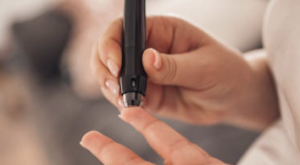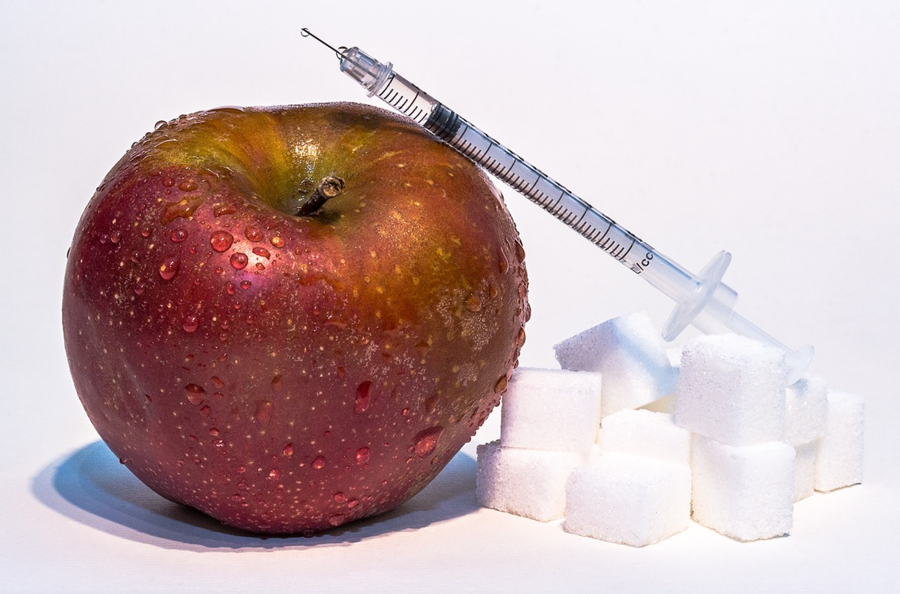Diabetes is so commonplace today that all of us may know a bit about the chronic disease. However, there is a lot of misinformation floating out there.
Here are some facts to clear up any confusion…
1. You don’t have to be overweight to develop Type 2 diabetes.
The image in our mind of the diabetic person tends to be a heavy, inactive person, but this is not necessarily true. While obesity can lead to diabetes, Type 2 diabetes can also be found among young, thin persons. Remember, just because someone ‘looks’ to be in good shape, this does not mean that he or she is healthy.
Any number of unhealthy habits can be causing damage on the inside, putting you at risk for developing diabetes.
2. There is no such thing as a ‘diabetic’ meal.
 Yes, when you have diabetes, you will need to look closely at the food you eat to make sure that you are having a well-balanced meal that would not cause your blood sugar to spike or plummet. But there is no such thing as a ‘diabetic’ meal.
Yes, when you have diabetes, you will need to look closely at the food you eat to make sure that you are having a well-balanced meal that would not cause your blood sugar to spike or plummet. But there is no such thing as a ‘diabetic’ meal.
A diabetic person will need to have a clear understanding of how food affects his or her body, and plan meals accordingly to suit.
It is also important to note that when you eat is crucial — you may need to eat several small meals spaced evenly throughout the day to stay within your target range for blood glucose control.
3. Diabetes is a leading cause of blindness, nerve damage and kidney failure
We may know of the connection with diabetes and heart disease, but diabetes can cause much more damage to your body. Your eyes should be checked at least once per year for bleeding, which can be caused by diabetes.
Another aspect many are not aware of is nerve damage, which can occur when blood glucose and blood pressure get too high. As a result, sensation in the extremities can be lost, which means that you may have a cut or infection on your foot and not feel any pain. Eventually, nerve damage can result in amputation.
4. Diabetes can drastically affect your sex life.
Erectile dysfunction, low testosterone and vaginal dryness are other lesser-known conditions associated with diabetes. This can happen as a result of high blood glucose, nerve damage, blocked arteries, fluctuating hormones, low libido, and even some of the drugs used to manage your diabetes.
There are ways to improve your sex life despite your diabetes, so don’t be shy about discussing these problems with your doctor.
5. Re-using needles and strips on yourself is ‘sharing’.
Managing your diabetes certainly isn’t cheap, but don’t skimp on your equipment to save a buck.
Cleaning off a needle only removes the silicone coating from the needle tip, but skin residue remains — which is tantamount to ‘sharing’. And we all know that needle-sharing is unhygienic.
Do yourself a favour and follow the guidelines on all the tools you use to manage your diabetes.
6. You are supposed to stick the needle into the side of your finger, not the tip.
 This is one that may seem crazy if you’ve never heard it before, but there is good reason. Repeatedly punching the tips of your finger with a needle can result in nerve damage.
This is one that may seem crazy if you’ve never heard it before, but there is good reason. Repeatedly punching the tips of your finger with a needle can result in nerve damage.
Eventually, a black spot or hard lump may appear on your fingertip.
To avoid this, massage your fingertip to promote healthy blood flow to the area, and then stick the side of your fingertip.
7. If you take insulin, you need to rotate the insertion points.
Firstly, you cannot give insulin on the back of your arm. It needs to be taken on stomach, thighs or buttocks interchangeably, so that each area is equally used for insertion.
If you keep sticking the same spot repeatedly, this may form a lump, and the tissue is not going to absorb the insulin as it should.
8. You need to be checking your feet.
If you’re fond of your lower limbs and have no desire to lose them, be sure to frequently check your feet.
When you finish showering, take a good look at your feet in adequate lighting. Examine for any changes in colour and temperature; and cut your nails straight across and file the edges.
9. Do NOT cut off or prick your ‘water bladder’!
Even if you don’t feel the pain much, it’s a bad idea to interfere with skin lesions particularly on your feet, where nerve damage can occur due to diabetes.
Seek medical advice to alleviate soreness or lumps.
10. Finally, Know Your ABCs!
Talk to your health care team about how to manage your A1C, Blood pressure and Cholesterol — your ABCs.
 A1C: This is a blood test that measures your average blood sugar level over the past 3 months. This is important to track your averages to ensure that you monitor your risk for damage to your heart, blood vessels, kidneys, eyes and feet. The ideal goal for diabetics is below 7.
A1C: This is a blood test that measures your average blood sugar level over the past 3 months. This is important to track your averages to ensure that you monitor your risk for damage to your heart, blood vessels, kidneys, eyes and feet. The ideal goal for diabetics is below 7.
Blood pressure: This is the force of your blood against the wall of your blood vessels. If this is too high, your heart will be working too hard, which can lead to heart attack, stroke, and damage to your eyes or kidney. The ideal goal for diabetics is below 140/90.
Cholesterol: There are two kinds, LDL and HDL. LDL or “bad” cholesterol can build up and clog your blood vessels, causing heart attack or stroke. HDL or “good” cholesterol helps remove the “bad” cholesterol from your blood vessels. Your goals may be different from others, so ask your healthcare professional what is the ideal target range for you.

